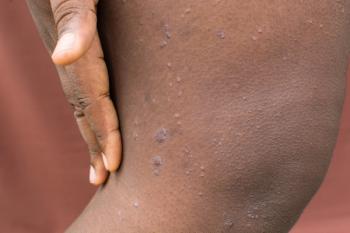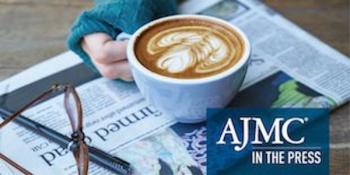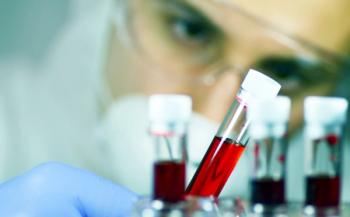
New Research Calls for a Reconsideration of Loop Diuretic Use, Fluid Restriction in HF
Thirst outcomes were investigated among patients with stable heart failure (HF), due to the limited data available on this relationship and how it, along with fluid and sodium intake, influences clinical outcomes in this population.
Researchers are calling for a review and possible reconsideration of diuretic use among patients whose
“There is ongoing debate on the role of fluid restriction in HF management,” the authors wrote. “There is only scarce data about the relationship between (severe) thirst, actual fluid intake, and other variables that can be related to thirst in a stable HF population.”
The 100 patients covered by the authors’ cross-sectional analysis were receiving care at 1 of 2 outpatient HF clinics in the Netherlands, Hospital Group Twente in Almelo and Hengelo; they were recruited between January 2017 and November 2018, and all had New York Heart Association class II (74%) or class III-IV (23%) disease. Thirst was assessed using a visual analogue scale (VAS) of 0 (no thirst) to 100 (worst possible thirst), and thirst-related distress was evaluated via the Thirst Distress Scale-HF, which contains 9 statements on thirst and a scale of 1 (strongly disagree) to 5 (strongly agree). After 3-day food diaries were completed (n = 68) and following 24-hour urine collection, the patients were subdivided into severe and low thirst groups.
Among the study population (mean [SD] age, 72 [12] years; 40% female), 25% were experiencing severe thirst and 94% had their fluids restricted. Thirty-seven percent were restricted to between 1500 and 2000 mL, and 32% were restricted to 1500 mL. The overall mean thirst score was 28 (25), with severe thirst defined as a VAS score above 49.
A potential link was seen between a higher dose of loop diuretics and higher urine output with severe thirst. There was a 2.25-times greater risk of severe thirst seen with loop diuretics (odds ratio [OR], 3.25; 95% CI, 1.01-10.45; P = .048) and a slightly increased risk of 0.002 seen with higher 24-hour urine output (OR, 1.002; 95% CI, 1.00-1.003; P = .010).
Within the food diary group, higher sodium intake, a higher dose of loop diuretics, and excess fatigue were linked to severe thirst. The risk associated with higher sodium intake was 0.002 (OR, 1.002; 95% CI, 1.001-1.003; P = .003); with higher-dose loop diuretics, 21.69 greater odds were evident (OR, 22.69; 95% CI, 2.78-185.04; P = .004); and with fatigue, there was a 10.2-times greater risk of severe thirst (OR, 11.2; 95% CI, 1.54-82.12; P = .017).
Among those who completed a food diary, the mean sodium intake was 2168 (958) mg and the mean fluid intake, 1823 (459) mL. For those classified as having severe thirst, the mean fluid intake ranged from 2026 to 1903 mL from days 1 to 3, while for those with low thirst, their fluid intake ranged from 1853 to 1739 mL, respectively.
Most of the patients (53%) had HF with reduced ejection fraction, defined in this study as a left ventricular ejection fraction below 40%.
Overall, 62% did not adhere to their prescribed fluid intake, 43% drank more fluids, and 19% drank less than what was prescribed. The mean thirst score was lowest in patients who adhered to their prescribed fluid intake, at 23 (17) compared with 26 (25) in the patients who drank less and 34 (26) in those who drank more than prescribed.
However, the greatest difference was seen between patients with severe thirst, whose mean thirst score was significantly higher vs the low-thirst group: 53 (29) vs 28 (23). These patients also experience fatigue at a rate that was more than twice vs the rest of the study population: 64% vs 31%.
“We realize that there could be other variables that might influence the severity of thirst in HF patients,” the authors concluded. “However, this is the first study in which the actual fluid and sodium intake is related to thirst in HF patients.”
They recommend that future studies verify their findings in other patient populations, taking into consideration the influence of both food intake and weather. In addition, clinicians should continuously review prescribed diuretic doses and perhaps update fluid restriction guidance.
Reference
van der Wal MHL, Jaarsma T, Jenneboer LC, Linssen GCM. Thirst in stable heart failure patients; time to reconsider fluid restriction and prescribed diuretics. ESC Heart Fail. Published online May 12, 2022. doi:10.1002/ehf2.13960
Newsletter
Stay ahead of policy, cost, and value—subscribe to AJMC for expert insights at the intersection of clinical care and health economics.








































